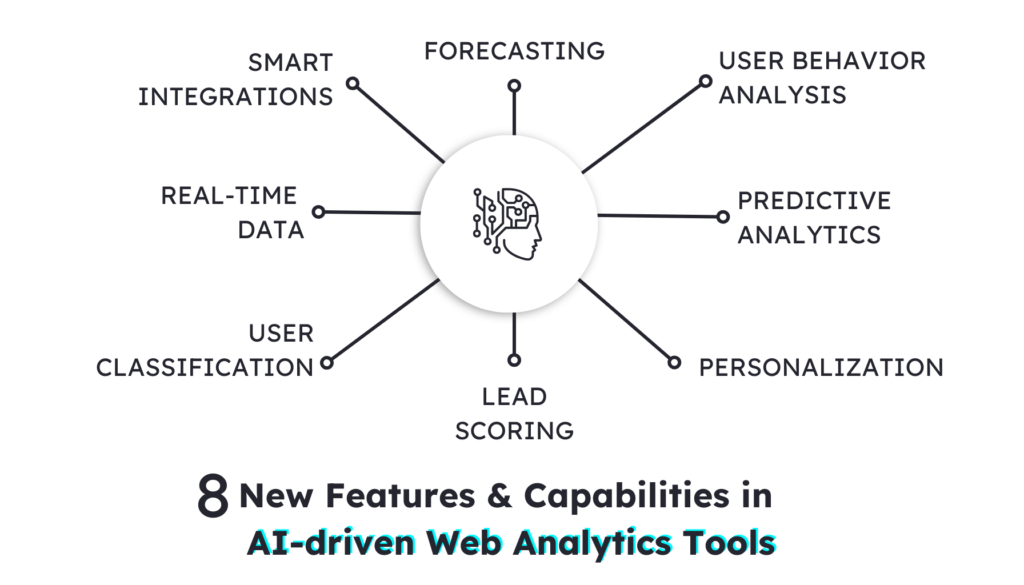Web Analytics Simplified: Empower Your Digital Strategy For Better Results
Table of Contents

- jaro education
- 10, September 2024
- 2:00 pm
Introduction: Why Web Analytics Matters for Business Success
In today’s digitally driven business landscape, those who cannot make effective use of their data can often be left behind. It’s no longer good enough to just be online. Today, companies must know how their website, social media, and other digital campaigns are performing. That is where the world of web analytics comes into play. Equipped with the right set of tools and insights, you should be able to understand customer behaviours, optimize marketing efforts, and ultimately grow your business.
Web analytics are like the secret arms that enable the owners to measure everything, from page views and conversions down to user engagement and sources of traffic. These data insights aren’t just numbers on the screen but building blocks for a strategy on how you will unlock your business’s real potential.
But knowing how to convert all this into actionable insight is more than just a technical expertise. This is where IIM Ahmedabad’s Digital Marketing: Business Models, Processes, and Technologies programme comes into play. The programme equips you with web analytics tools and integrates them seamlessly into your business strategy.
What is Web Analytics? A Brief Overview
Well, the web analytics process is essentially the gathering, reporting, and analysis of website data. It isn’t about knowing how many visitors come to your site, but how they came to it, what they did on the site, and why they left.

*Matomo
Types of Web Analytics
Web Analytics are broadly classified as:
- On-Site Analytics: On-site analytics refers to tracking everything that happens on one’s website with every click and scroll to conversions. This helps businesses understand how users are interacting with different elements on a website.
- Off-Site Analytics: This might also involve all the data about your audience that is not directly connected with your site, such as social mentions or external web traffic referrals.
- Real-Time Analytics: As the name would probably suggest, this involves the monitoring of website activity in real-time and presents the ability for businesses to make immediate decisions based on current information.
It means that every business should know the key metrics concerning bounce rate, session duration, conversion rate, and traffic sources. Those numbers are going to give you valuable insights into the behaviour of your audience and will help optimize both user experience and your marketing strategies.
The same will be elaborated upon, in detail, through the Digital Marketing: Business Models, Processes and Technologies Programme offered at IIM Ahmedabad. This teaches how to track them and interpret them effectively to make the web analytics process quite simple, even for those who are just entering the field.
Understanding the Data – Turning Numbers into Actionable Insights
Data devoid of context is just noise. Web analytics becomes so much more valuable; it takes that noise and orchestrates it into a symphony of actionable insights, informing your business strategy.
Not all metrics are created equal. Some, like page views, might look flashy but are pretty useless when it comes to any deeper analysis. Focuses on meaningful including conversion rates, and CAC, and provides businesses with insights leading to real results.
Analyzing Consumer Behavior
Web analytics can tell you how your users move through your site. Through user journey tracking, for example, you might find out if there are specific pages on your site that, when visited, create an unusually high exit rate from your site, and whether some call-to-action buttons work better than others. In that way, you’ll know where improvements on your website should be made to enhance engagement and drive better conversion rates.
Segmentation
Segmentation based on the audience, traffic source, or users’ behaviour brings the business closer to exactly what is working. Such division of traffic flows provides an overview of where your visitors are coming from social networks, search engines, or directly through resources that will enable you to brainstorm.
From designing better websites to optimizing ad spending, the Digital Marketing program at IIM Ahmedabad equips them to break down complex data sets into meaningful business actions.
Effective Web Analytics Tools
You can’t manage what you can’t measure, and you can’t measure without the proper tools.
Google Analytics
Among the various web analytics tools available today, one of the most popular platforms for this is Google Analytics. It provides detailed insight into website traffic and user behaviour. Some of the cool features that Google Analytics offers to businesses include traffic reporting, user demographics, and goal tracking. It’s a very powerful tool since businesses are empowered to understand their customers’ digital journey. Whether you are looking at how much time users spend on a certain page or the conversion rate of your e-commerce site, Google Analytics has got you covered.

*The Knowledge Academy
Other Web Analytics Tools
- Adobe Analytics: For more enterprise-level requirements, Adobe Analytics provides deep-dive insights into cross-channel marketing.
- Hotjar: It is famous for its heatmaps and recordings of users to understand how visitors navigate the website.
- SEMrush: An excellent all-in-one tool allowing not only you to track the analytics of your website but also those of your competitors.
Which one is picked will have to do with your business size and goals, but one thing is for sure: mastery over such channels promises success. IIM Ahmedabad’s Digital Marketing: Business Models, Processes and Technologies program trains you for the employment of these tools in making data-driven decisions.
Web Analytics for Goal-Setting and Strategy
The real value of web analytics arrives when businesses tie this data to their goals. Want to raise brand awareness? Drive conversions? Lower bounce rates? You can track these objectives with the help of a web analytics process.
Aligning Analytics with Business Goals
Every business decision needs to be data-driven. For example, if your goal is to reduce the bounce rate, using analytics you can determine at which point the users drop off, thereby taking control of making those changes.
SMART Goals
The acronym stands for Specific, Measurable, Achievable, Relevant, and Time-bound. Business managers can use it to set tangible, measurable objectives. For example, here a business is setting an objective regarding its conversion rate: “Increase the current conversion rate by 10% in the next six months”. These conversion data can be utilized to measure the effectiveness of your strategies in real time to achieve this objective.
Building a Data-Driven Strategy
With the web analytics process, you’ll learn to take raw data and build a strategy that drives results from A/B testing your landing pages to optimizing your ad spend. In the Digital Marketing program, IIM Ahmedabad will teach you how to realistically set goals and how to use analytics to reach those goals.
The Future of Web Analytics – Trends to Watch
The Importance of Web Analytics in the digital world rises with each passing day. New technologies are entering this industry, such as AI and ML. Both of these technologies have remade the way businesses collect data and analyze it. These aforementioned technologies make predictive analytics better by automating most of the work from a manual perspective and providing even deeper insight to businesses.
AI and Machine Learning
That’s a real fantasy, basically: being able to fathom what your customers will do before that transpires. Thanks to AI and ML, this daydream is now a reality. Through its analysis, AI identifies patterns in the data and predicts forthcoming user behaviour, with the businesses thereby having the ability to take corrective/pre-emptive actions with much ease well in advance.

*Pathmonk
Customer-Centric Analytics
Indeed, working with data in silos is a thing of the past. The future with web analytics is knowing precisely what the customer does right from seeing the first ad to making the final purchase. This way, it can be fine-tuned for a seamless customer experience.
The Role of Data Privacy
The more advanced the data collection, the more advanced concerns about data privacy become. Due to legislation such as GDPR and CCPA, businesses need to be more discreet than ever with how they collect and store data. Undoubtedly, the future for the web analytics process will also look much like stricter compliance with privacy regulations. This does mean that businesses have a special need to stay in front of the trend.
IIM Ahmedabad’s Digital Marketing program puts participants through these emerging trends so that they not only pace up with the trends but lead them.
Real-Life Business Applications of Web Analytics
Web analytics is theoretical; it is practical too, as its application in real life brings about business success that can be measured.
E-commerce
The importance of web analytics in e-commerce sites is instrumental, as it helps in understanding the performance of products by keeping a tab on CAC while optimizing conversion rates. For instance, due to the web analytics process, it might come to light that at a certain step, customers are abandoning their carts. The company could then experiment and apply the remedy, such as making the checkout process easier.
Content Marketing
Through web analytics processes, businesses whose main focus is content, for example, a blog or a video, measure engagement. That would include time spent on page and social shares that inform decisions on what type of content resonates most with your audience.
B2B Marketing
In B2B organizations, through web analytics, one can track the leads generated, monitor the sales funnel, and know which marketing campaigns are yielding better results. Integrating the use of web analytics processes within CRM tools enables companies to manage better lead generation and sales pipeline management.
IIM Ahmedabad’s Digital Marketing program inducts real-time case studies and projects, enabling you to understand the importance of web analytics across industries.
Common Web Analytics Mistakes and How to Avoid Them
Even while web analytics has a lot to offer, most businesses make mistakes that lead them to failure in this sphere.
Ignoring Data
While the collection of the data is one thing, studying it over and over again is another. Many business owners collect large sets of data but do not analyze such data. You should be auditing your web analytics now and then so that any trend or problem can be located well in time.
Focusing on Vanity Metrics
Moreover, other metrics, such as the number of page views or social network “Likes,” might look impressive but do not always translate into actual business success. Instead, delve more into actionable metrics that will help you make better decisions, such as conversions, customer retention, and return on investment.
Improper Goal Setup
If you do not have well-defined goals, then your web analytics efforts are likely to bomb. Set SMART goals relevant to your business objectives.
Not Testing Hypotheses
In web analytics, failure to test hypotheses results in the misattribution of changes, missing confounding variables, and reinforcement of biases. These will drive one toward implementing inefficient strategies, going with misleading conclusions, and resource waste. Proper hypothesis testing ensures that valid insights can be drawn, assumptions are validated, and performance optimized by finding the true causes of changes and understanding user behaviour.
IIM Ahmedabad’s programme helps you avoid these pitfalls by taking you through best practices and real-world applications.
How IIM Ahmedabad's Digital Marketing Programme Empowers You
In today’s competitive landscape, web analytics are not optional but highly essential to be on top. Digital Marketing: Business Models, Processes, and Technologies at IIM Ahmedabad equip you with all that you would need to turn yourself into a digital marketing and web analytics expert. This innovative program encompasses everything from SEO and social media marketing to web analytics processes and digital strategy. Dive into real case studies, get hands-on experience with top-tier tools such as Google Analytics, and learn how to develop data-driven strategies that deliver results.
Why Choose IIM Ahmedabad
Not only would you learn from experts within the industry, but also from one of the top business schools in India, well-recognized for its excellence and leadership in the field of executive education. This course will empower you to ride on the power of web analytics in the transformation of your business toward making data-driven decisions for sustainable growth.
Conclusion
Fast-evolving digital space requires decision-making atop insights from data. Web analytics enables business strategies, powers growth, and communicates with customers at the right place and time when implemented appropriately. It is, however, an essential skill to be picked up by oneself through hands-on training instead of a mere understanding of its basics.
That’s where the Digital Marketing: Business Models, Processes, and Technologies program by IIM Ahmedabad comes in. This prestigious program is presented in association with Jaro Education, one of the India-based providers of executive education. Jaro Education partners with top-tier institutions to deliver world-class educational experiences designed for working professionals and business leaders. With a focus on career growth and upskilling, Jaro Education ensures that participants receive cutting-edge knowledge that is immediately applicable in the real world.
This program presents a unique opportunity to be exposed not only to the expertise of IIM Ahmedabad but also to an innovative learning platform at Jaro Education. This alliance makes top-notch education accessible, flexible, and relevant to meet the demands of today’s business executives. Take your next step in the journey of professionalism. Understand the importance of Web Analytics to take your business to new heights and achieve success with the combined power of IIM Ahmedabad and Jaro Education.
Frequently Asked Questions
Web analytics lets you monitor how your marketing campaigns are performing. It analyzes the sources of traffic, the conversion rates, and user behaviour. You will be able to see which campaigns yield higher traffic, and which ad is turning into conversions, and based on that, you can adjust accordingly in pursuit of higher ROI.
You should be reviewing your web analytics data at regular intervals. You could analyze key metrics at a regular frequency, daily, weekly, or monthly, based on your business and campaign goals. This way, you will be able to track trends on time, detect problems early, and make changes before it is too late.
Some major KPIs that are vital include:
- Sources of Traffic: Direct, referral, social, organic
- Bounce Rate: The percentage of visitors that leave your website without performing any action.
- Conversion Rate: The percentage of completed desired actions made by the visitor: Customer Lifetime Value (CLV).
- Customer Acquisition Cost (CAC): These KPIs give a full insight into how well your website and marketing are functioning.
Web analytics will enable them to delve even deeper into their audience, optimize their website for user experience, and extend the typically limited marketing budgets of small businesses. By monitoring the behaviours of users, a small business can effectively make data-driven decisions on how to increase conversions and improve customer retention without necessarily having huge resources.
- Google Analytics: Google Analytics is a free, popular means through which one can closely observe the performance of traffic and the behaviour of users on every website. It befits most businesses, ranging from small enterprises to large corporations.
- Adobe Analytics: Advanced tool, highly-priced for enterprise organizations. This will offer them better features for cross-channel tracking, predictive analytics, and customer journey mapping; hence, best suited for companies that deal with large datasets.
Web analytics will help an organization track an individual user’s journey, preference, and behaviour. Analyzing such data will in turn empower organizations to offer personalized experiences, such as product recommendations, personalized content, or marketing messages that improve customer satisfaction and customer loyalty.
While basic web development knowledge can be helpful, most web analytics tools, like Google Analytics, have been designed to be user-friendly and therefore don’t require extensive coding skills. In any case, basic coding skills might be beneficial for more advanced customization, such as setting up event tracking or implementing code snippets.
Web analytics will, therefore, allow you to monitor the important SEO metrics regarding organic search traffic, bounce rate, and page performance. It thus allows one to understand how the ranking and performance of their content go on within the search engines, helping in the identification of areas that need more work, optimizing underperforming pages, and developing better content strategies that fix the organic search rankings.
Web analytics has informed us about user behaviour and has pinpointed at which step users normally encounter a hitch. It helps businesses understand where visitors fall off or have the hardest time, so they can make changes to the website by knowing what design tweaks to make, which forms to make simpler, or even A/B testing their call-to-action buttons to help raise their conversion rates.
Jaro Education is known to tie up only with the topmost academic institutions to bring world-class executive education. With a tie-up with IIM Ahmedabad, Jaro Education offers flexibility in online learning among participants by maintaining the right balance between academic rigour and practical, realistic applications. They aim to make quality education accessible for professionals who seek to upskill themselves for career growth.












